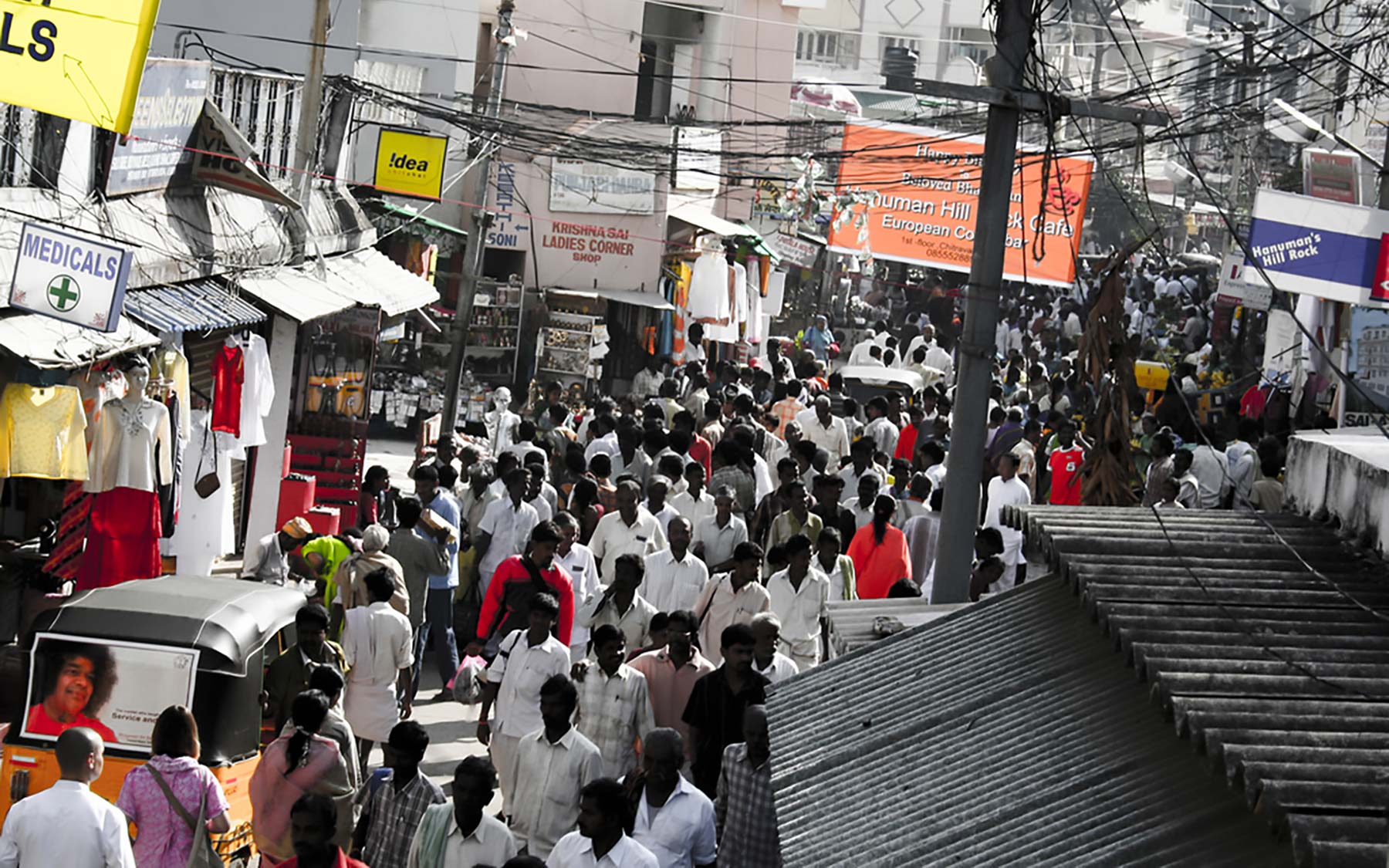Base Pairs podcast
Today, an estimated 7.3 billion people are sharing the Earth’s land, water, and food. Each year, we have to share 196.9 million square miles of land, 326-million-trillion gallons of water (although only a portion of it is accessible), and 4 billion tons of food produced for human consumption (not including animal feed).
Forget, for a moment, that the average American eats nearly one TON of food annually. THAT’S a discussion for nutritionists. However the FAO assures us that as things stand, there IS enough food to go around, and what’s more, there is likely to be enough in the coming decades.
AA: Hey there.
BS: We’ve already talked a lot about genes, research, and how all that impacts us, people.
AA: So far we’ve dived into the discovery of new diseases, revolutions in farming, and the evolution of humanity.
BS: This time we’re going to talk some more about that very last bit.
AA: Which bit?
BS: The last bit. The impact bit.
AA: The people bit?
BS: The people bit! People, people, people, people, people, people…
AA: People. I think we get it.
BS: People are everywhere and we’re always growing … growing physically, growing as a species, and most noticeably, growing in number.
Currently the globe place host to an estimated 7.3 billion people and that’s no number to sneeze at … or do, because by 2050, the United Nations expects global populations to total up to a stunning 9.7 billion people.
AA: And to put that in perspective, it would take more than 3 hundred years just to count to 9.7 billion out loud. (Brian counting in background)
AA: Even more worrying, is that it won’t be the healthiest or wealthiest countries that grow the most. According to the FAO…
BS: That’s the Food and Agricultural Organization of the United Nations.
AA: The great majority of population growth will happen in developing nations.
JS: If you look into the population projections that are currently available, we essentially have 13 countries that have population growth rates above 2.5 percent in the future.
BS: That’s our friend Josef, a high-profile analyst who works for the FAO.
JS: My name is Josef Schmidhuber. I’m the deputy director of the Markets and Trade Division.
BS: Alongside his colleagues, Josef works to understand food availability and market trends, which in turn tells him what kinds of difficulties the world’s most vulnerable countries are due to face.
JS: These are countries like Senegal, Burundi, Tanzania, Mali, Central African Republic, Uganda, Angola, Zambia and Niger.
AA: And if you think he sounds worried, he is.
JS: So if you look at their total population today, this is around 320 million. These are just 13 countries. If we look at their populations in 2050, it will increase to 835 million. If we look into their population by the end of the century, 2100, their population will have swollen to 1.8 billion people. Okay?
If you take the country with highest growth rate, that’s Niger, currently at around 20 million people, it will be at 72 million people by 2050 and 210 million by 2100. Clearly, that’s unsustainable.
BS: Unsustainable, meaning that as things stand, these incredible population spikes can’t last.
JS: Right, because a country like Niger doesn’t have the agriculture resources, doesn’t have the land, the water, and everything that is required to actually produce the food that it requires for 200 million people from a domestic base.
At the same time, with the exception of production of uranium, it hardly has the non-agricultural resources to import the food that it would require to feed its population.
There are two alternatives. Either the country will be dependent, in that they will significantly sit on foreign assistant, or these population projections don’t come true simply because there is permanent malnutrition and hunger.
AA: It’s not a pretty picture Josef is painting here, and with climate change and political unrest sweeping across the globe, he admits the situation could get even worse.
BS: But, he did tell us that there is hope.
JS: What is very important, is that developing countries manage to increase the productivity on the existing land and, I mentioned Niger, you don’t only have this phenomenal population growth, it’s a country which essentially has 12 million hectares of crop land available that are potentially usable and all of them are already in use. So, in order to increase production, one needs to have higher productivity.
AA: Higher productivity. He’s saying that for a country that can’t even afford to feed itself with imports. The only way to battle starvation is to somehow take one corn cob and make it two, to take an already fruitful field and make it grow more.
BS: That sounds like a tall order, perhaps even a miracle, but if you’ve listened to our second episode, you know it can be done given enough time and scientific ingenuity.
JS: So, the genetic potential for many crops still considerable. We haven’t exhausted it. We have indications that that’s the case, so it may still be a better idea to invest in R&D than into more intensive agriculture.
AA: Oh, R&D. Now we’re starting to sound like a science podcast.
BS: That we are, and this genetic potential has a lot to do with how good the farmers and scientists in a region have gotten at controlling growth.
DJ: Yeah so really what we’re doing is we’re tricking the plants. We’re fooling them into putting all their resources into one ear. Whereas, in the natural setting, that would not be good for the plant, but in an agricultural setting, that’s exactly what we need.
BS: That’s David Jackson, a professor here at CSHL, and he’s one of the world’s leading plant scientist. He spends most of his days making corn grow in ways that nature would normally avoid.
DJ: The natural ancestor or relative of corn makes very small ears, but it makes hundreds of them, and in a natural environment, that’s good for the plant because it optimizes the plant’s ability to spread seeds and to reproduce itself. But in a farmers field, it’s a very different environment. There, you want to have all of the energy, all of the seeds, concentrated in one large ear that makes it easier for the farmer to harvest.
AA: Tricking a plant to do something that it wouldn’t do in the wild may remind you of particular buzzword, but…
DJ: It’s not GMO, we’re not adding any foreign genes to the plants. We’re doing it by the same process by which breeders have been making crops for the last hundreds of years.
AA: Dave studies the development and architecture of plants and he uses corn in part because it’s a model crop that scientists are very familiar with.
BS: Remember episode two? No, really. Go listen to episode two if you haven’t. Corn, as it turns out, has been subject of crop study for over a century.
AA: Anyway, Dave uses corn not just because he wants to make more corn, he’s looking into ways to increase yield in all plants, and to do that he’s got to study crop growth on a very fundamental level.
DJ: My feeling is that most plants the basic way in which the genes work is the same, but their expression changes in different plants and that gives rise to different architectures.
AA: I like to think of Dave as an ugly corn aficionado because to prove this he chases after mutations, sometimes sifting through entire fields of corn in search of the most unsightly cobs.
DJ: We end up opening thousands of ears in a day and we look for ones that look abnormal.
Speaker 11: Let’s just see if I can find a [inaudible 00:08:28] Yes.
speaker 2: The reason is because a mutant is a way of figuring out how normal development works, right? So say you have a car, for example, you want to know how it works. If you knew nothing at all, one way to do it would be to just open up the hood and start pulling pieces out and see what happens, so that’s exactly analogous to what we do when we look for mutants. Mutants … we’ve basically pulled out one gene. We’ve inactivated it and so then we find out what happens when you inactivate that one gene.
BS: It sounds simple enough, but there’s one big catch. If, we’re comparing corn to cars, your average maize plant could have more than 32 thousand protein coding parts to experiment with and each one could be broken in different and complicated ways. Discovering these genetic tweaks one at a time seems like a pretty exhausting way to figure out how plants work.
AA: That’s true, but the alternative is the guess work that only rarely leads to resilient radishes or blue ribbon beets.
Without the crucial knowledge Dave and colleagues are working towards, breeders would never be able to unlock a plants full potential as a crop, and besides, sometimes a scientist can get very lucky.
DJ: So we got lucky. It’s like winning the jackpot kind of thing, you know?
BS: That’s Dave again, talking about a discovery recently made in his lab about stem cells. One that was a long time coming.
DJ: I’ve been working with that mutant for almost 20 years. I’m a little bit embarrassed to say, but sometimes these projects go on for a long time.
AA: And all those years of work paid off in really big way.
DJ: Yeah, so what we’ve found in our work is that the stem cells also respond to signals that come from the developing leaves and this a very new way of thinking about stem cells, because normally we think about them sort of being fairly autonomous, where they control themselves, but this suggests that the leaves, for example, which we normally think of being as quite passive in the developmental process, they’re actually sending signals back to the stem cells to instruct them how to divide.
BS: Whoa.
AA: Yeah.
BS: I get what Dave’s saying here, and it’s pretty exciting stuff, but to really convey its importance, we’re going to need to talk shop.
You’ve probably heard of stem cells, the Big Momma cells, if you will, from which all other specialized cells are born. Need a leaf cell? A stem cell divides, creating one new stem cell and one cell meant to develop specifically as a leaf cell.
AA: Yep. That’s the bit that people usually know, but what’s extra cool is that, while stem cells od their jobs, they’re constantly chatting with one another.
BS: Yeah, they’re all like, “I’ve got this cell covered boys, no need to double up. There’s lots of other work to be done!”
AA: (Laughter) Okay, Brian. I’m not sure that molecular signaling can have an accent. Actually, I don’t think that it sounds like anything, but I get your point.
What Brian’s trying to say is that stem cells keep in touch with one another so that energy isn’t wasted on dividing, unless a plant really needs a new cell of a specific type.
BS: But Dave’s lab discovered that mature cells, the cells that make up those growing leaves and roots we talked about, they’re actually sending signals to the stem cells also, giving updates on how things are shaping up where they are, and in this way, helping the stem cells know how to direct future growth.
DJ: A nice analogy of this is if you imagine the process of building a house. So, that normally starts with an architect who would make the plans, and then the architect would pass those plans onto a builder, who would then start laying the foundation and laying the bricks for the walls, for example. So this kind of signaling is analogous to thinking about a way in which those bricks are now sending signals back to the architect to tell the architect to maybe modify the plans for the house … and we think it makes a lot of sense, although it’s quite a new way of thinking about development, and it makes sense because the bricks, in that case, or in our case the leaves, are really out there in the environment, and they can sense what’s going on and they may find some mistakes that the architect has made or maybe find a better way to build the house, or, in our case, the plant.
AA: It’s a discovery that gives us a new view of plant biology that you won’t find in your high school text book, but you might be wondering how knowing this will feed the world.
BS: And this where we take our leave of the construction sight and return once again to the corn fields.
AA: Dave Jackson first discovered these leaf cell to stem cell conversations when investigating a single mutation known as FEA3, an abbreviation for Fasciated Ear 3.
DJ: You often see plants in your garden or in nature that are fasciated, so actually the word derives from a Latin term, which means club-shaped. The ears, rather than being long and skinny, actually look like a club, so they’re fatter at the top than at the bottom … and 3 means it’s the third mutant that we found which had that phenotype. There’s also a FAE1 and FAE2 and a FAE4 and a FAE5.
BS: You’ve been busy.
DJ: Yeah. (laughter)
BS: You’d have to see a FAE3 cob for yourself to really understand why geneticists have been chasing after fasciated corn for decades. Twisted and misshapen and packed full of shriveled kernels, these cobs scream mutant.
AA: Or, to circle back to Dave’s chop shop metaphor, they’re junkers just waiting to be torn apart and analyzed, and that’s exactly what he did.
DJ: As you know DNA is like a blue print, so that is read out in the cell to make proteins and we can recognize that the FAE3 gene was read out to make a kind of protein that we call a receptor, and these types of proteins that are very special in development. They’re proteins that sit on the surface of cells and respond to signals during growth.
BS: Or, to put it another way, these receptors are a lot like the hearing aids of stem cells, listening for signals heading their way.
AA: Dave and his team then set out to find the signal this particular receptor was picking up, and that’s when they discovered that it was coming from leaf cells, as opposed to the usual stem cell chatter.
DJ: Well the leaves are really out there in the environment, and they’re sensing all sorts of different environment conditions, such as light and temperature and amount of water … and the plant generally wants to tailor its growth to match the environmental conditions. For example, if there is not enough water around, if the plant keeps growing at the same rate, it’s going to run out of water and die, so, the leaf is really out there in the environment and can sense these different factors and can then send information back to the stem cells.
BS: However, and here’s the key to Dave’s work, while this receptor is designed to pick up those important signals, it barely works in the FAE-3 mutant, essentially deafening its stem cells to elite status updates about local conditions.
AA: And being unable to hear the signal to put the brakes on cell formation, a FAE-3 mutants stem cells quickly get out of control.
DJ: They tried to make too many seeds, but it’s just the number’s so high that all of those seeds are competing and they end up just almost killing each other, because there are too many mouths going after too few resources.
BS: Now, as we said, wild corn is cautious about spending too much energy on new parts the environment won’t support. Dave’s team wants corn plants to make more parts, more kernels that is, and so they had the brilliant idea of finding a middle ground; a corn plant that will make a little bit too much seed, but not so much as to threaten the plant’s ability to survive.
AA: So you’re saying they wanted to find a mutant corn plant, one with a mutation in the FAE-3 gene, but one less powerful than the FAE-3 mutation that leads fasciation.
BS: Exactly, a corn plant broken just enough.
DJ: The number of seeds is increased a little bit and somehow the plant is able to still feed them so that we can get more seeds that are productive, that are mature and viable seeds.
BS: Plant scientists like Dave, they make their living by learning from nature. By looking at how a mutant plant is abnormal, they learn a way in which to essentially muffle the signals that would otherwise limit how productive any single ear of corn can be, and this has resulted in a stunning 50 percent increase in yield in corn plants grown under controlled conditions.
DJ: The next step now is to test this in an agronomic setting in varieties that farmers grow to see if we can also get similar increases.
AA: Dave even told us that he’s excited about this work, not only because the science fascinates him, but also because he fears for the future.
DJ: I mean, the other thing that people talk about but don’t consider [inaudible 00:18:21] I think is that population growth is still going on very much. I think that the current population is 7 billion projected to go to 9 or 10 billion by the end of the century. And on top of that, and in fact, we’re almost maxed out on the amount of agricultural land that we’re using on the planet, so where is that extra food going to come from?
And, on top of that, what I’m more concerned about is that a lot of people in developing countries are naturally developing more of a rich country or a developed country lifestyle, where they eat more meat and that requires a lot more input in terms of agriculture.
BS: And that brings us full circle back to our conversation with Josef, who told us that one of his greatest concerns is not that there won’t be enough food to go around, but that demand will heavily shift towards more and more western diet.
JS: In fact, it’s already something that we’ve seen. We’ve measured this a considerable convergence in diets towards a western type of diet, so that means there is also more consumption in livestock products eggs, milk, meat and so on, which requires a lot more input on the crop side, and that certainly will add to the needs to produce more wheat, more maize, more [00:19:35]
AA: It’s then a pretty good thing that science is working hard to take agriculture to the next level. A level where understanding how plants work in general can directly impact how we will feed ourselves in coming decades.
As Dave says about this most recent discovery…
DJ: With this particular gene, I am most excited about it because it’s something we found in maize. As a plant, for the first time, it’s been discovered in any plant, so it could be broadly applicable to many different crop plants and all plants that we know.
You know, science is a process which never ends in a way, so the more we find out the more new questions we have to answer.
BS: Well, this is where we should end the story for now, but as with all the lab’s ongoing projects, we’ll be sure to keep you updated as this revolutionary research plays out.
Extras for Episode 4
The urban beef burden
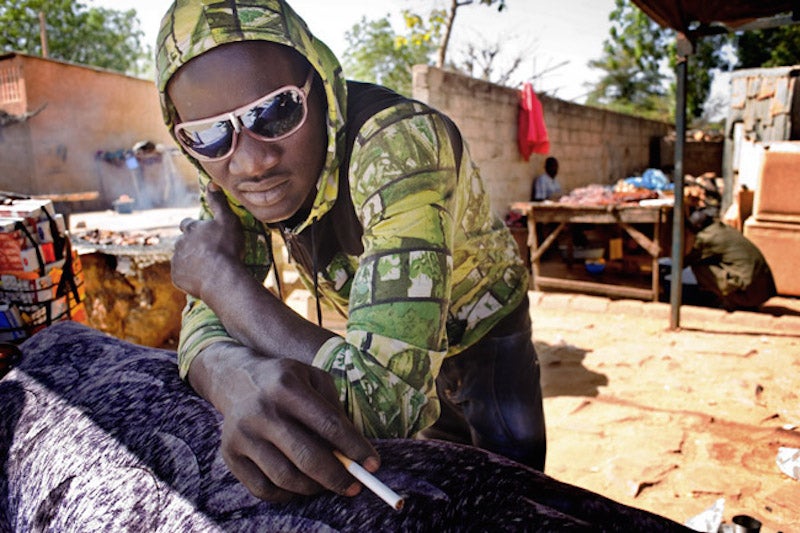
The trouble then is distribution. In our podcast, Josef Schmidhuber of the FAO and CSHL Professor Dave Jackson raise concerns about the rising popularity of meat-heavy, westernized diets. Josef explained to us that this is largely due to the rise and growth of cities in developing countries. Nearly ALL future population growth (into 2100) is expected to be urban.
Increased demand for on-the-go, meaty meals, will put greater pressure on limited resources. Consider, for example, that cows require up-to 28 times more land and 11 times more irrigated water than other livestock.
Meanwhile, the rural farming communities expected to support these new and demanding cities have not grown as much, and perhaps have even shrunk. In some cases, new generations have even left the fields for modern jobs and an urban lifestyle.
Urbanization can be very good for a developing world, as cities serve as international trading hubs that can expose a country to new ideas and varied or even healthier diets. However, if a country doesn’t have the resources to push its way into international food trade – as Josef says is the case with Niger – what’s left is an insatiable food demand that quickly outstrips local supply.
Figuring out the fieldwork
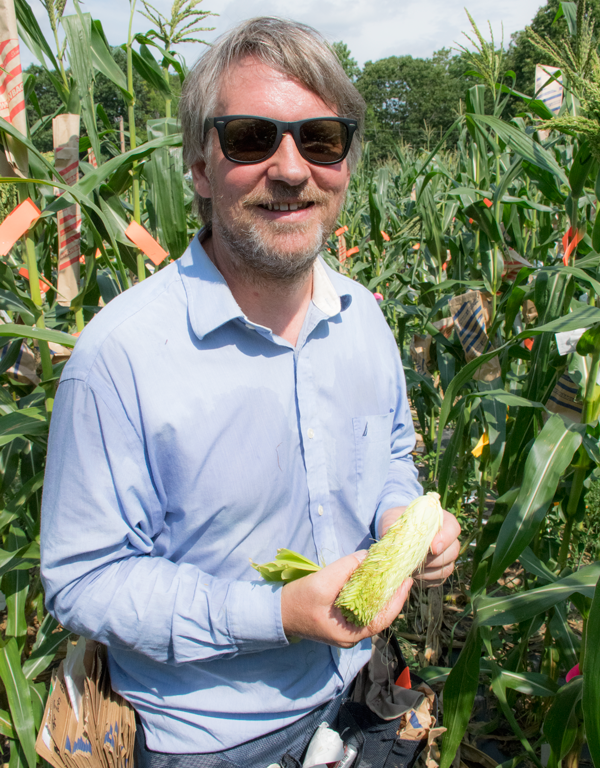
Dave says that during growing seasons, he’ll spend up to 6 days a week in his fields, tending the crops, searching for mutants, and performing crosses. We met him in one of these fields late last July to find out which labors-of-love keep him coming back.
That day, he was doing some self-crosses, which help ensure that inbred lines remain that way. Why is this important? Check out Episode 2 to learn more. Dave was kind enough to demonstrate a cross and let us try our own!
So how is it done? During flowering seasons, the tassels of a corn plant (the male part) are covered with bags, which are then stapled shut. Each bag fills with grainy anthers and—more importantly—pollen.
Later in the season, Dave will revisit these bags and that is when the crossing process begins:
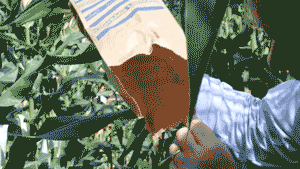
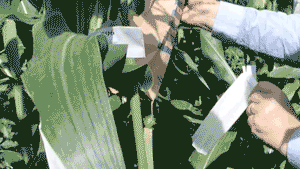
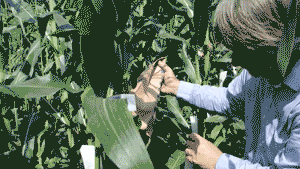
Written by: Brian Stallard, Content Developer/Communicator | publicaffairs@cshl.edu | 516-367-8455
